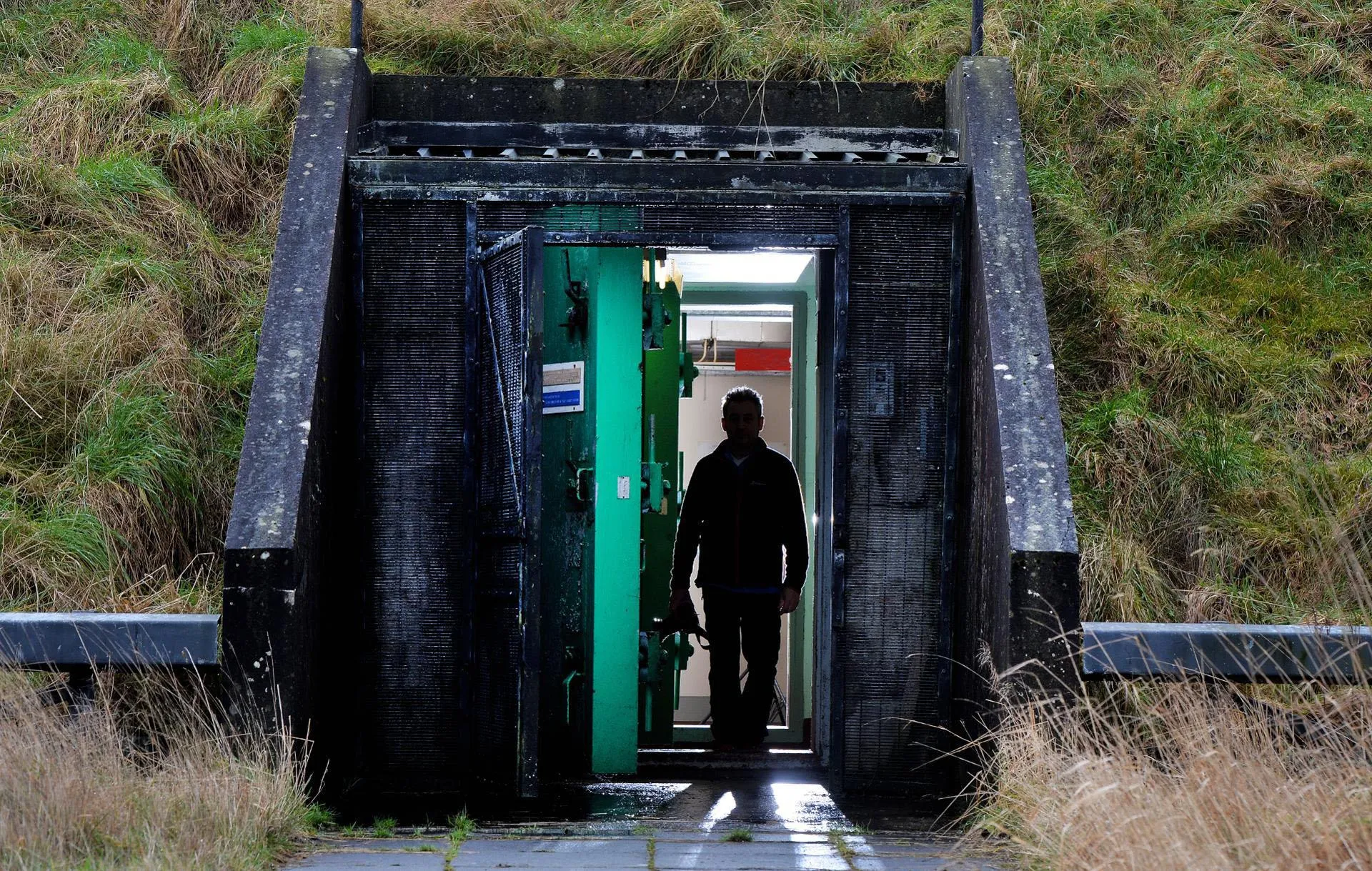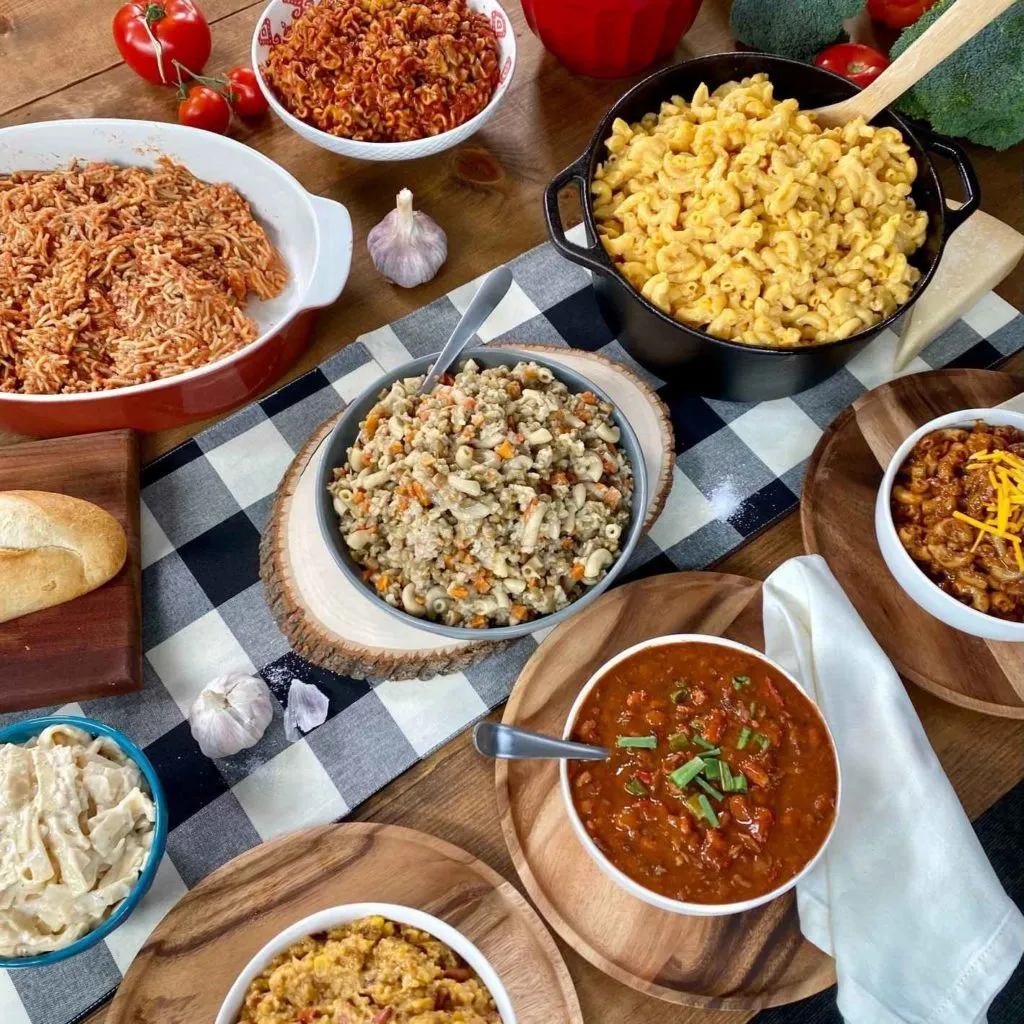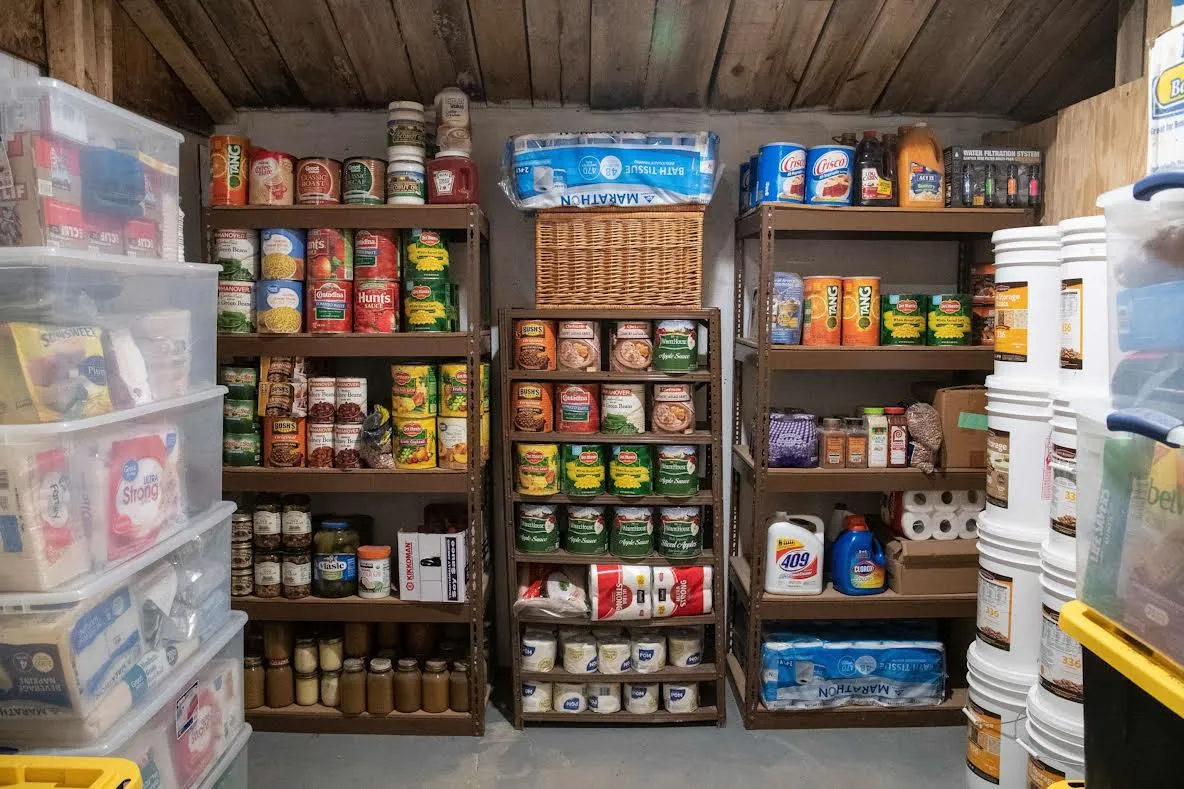How To find the best tasting storable foods Including Vegan Non-GMO & Gluten-Free!

by Dan Diamond

People are scared and should be. The supply-chain breakdowns are getting worse; expect food riots any day.
Food storage is considered part of being prepared for emergencies and natural disasters. Individuals and families can eliminate some stress, worry, and inconveniences by planning for emergency food needs. How much and which foods to store will depend on the members of your household, your preferences, special health conditions, ability to use the food in an emergency, and space for storage. Planning for short-term emergency food needs may be as simple as increasing quantities of some staple foods and non-perishable foods that you normally would use. (Non-perishable foods are those that can be stored safely at room temperatures.).
We believe that true freedom comes from a certain level of self-reliance.

One of the best choices for emergency food supplies is commercially canned foods. Canned foods are also cooked and can be eaten right of the can, or just warmed if they taste better that way. Foods that are canned are considered shelf stable and do not require refrigeration until opened. Shelf life, or how long they will last, is determined by methods that evaluate the quality of the food. Canned foods can last two years or longer. For best quality, store canned foods in cool, dry locations and use within one year.
If you include canned foods in your emergency food supply, inspect your supply periodically to make sure there are no rusty, leaking, bulging or badly dented containers and no broken seals. Dents that involve seams or can ends can break seals. Large or severe dents in the sides of a can may also break a seal around the can end or seam, even though it might not be obvious. Replace items found in any of these conditions. Do not eat out of cans found in any of these conditions during the emergency. If the disaster has produced conditions where canned foods are in flood waters, inspect them carefully for signs of damage. Throw out any home canned foods or foods in glass jars, whether opened or not, that have been soiled by flood waters. If food has been commercially canned and the metal can is still intact and not rusty or bulging, it can be used but will need to be cleaned and sanitized before opening.
Prepare a Two-Week Emergency Supply with Great Tasting Storable Food
You can now get great tasting organic storable food including something for Vegans and Gluten-Free diets.
Make a list of all family members by name, indicating any special needs (diabetic, allergies, etc.) List all staple foods on your shelves now. Indicate amount available, date purchased, date opened and use by/replace date if known. Post this list near storage cabinets or closets and update when changes occur. Repeat the step above for foods in your freezer. Make a list of meals to be served, labeled "Day 1" through "Day 14". Indicate where food can be found for each day, if not stored all in one location. Add notes to each day's list that indicate how much water and what equipment and utensils will be needed for preparation.
This process will force you to think through what you will need to purchase and store. If staples such as rice, instant cereals and potatoes and dry milk are not kept in packages with cooking directions, be sure to write up preparation steps or mix ratios on index cards and keep them closed in air- and water-tight plastic bags for use during the emergency.
If the Electricity Goes Off...
Even though it is unlikely that most emergencies will cut off your food supply for two weeks, some people choose to consider a short-term supply as one that will last that long. If you are in an area where it is known that power can be off for extended periods, a two-week supply may seem very reasonable. The same general suggestions found above for a three-day supply will also work for a two-week supply. However, for two weeks or more of emergency eating, it might be wise to pay more attention to nutrition needs than is necessary for 3 days of surviving special conditions. Plan food supplies so at least one well-balanced meal could be eaten each day.
One way to develop a two-week emergency supply is to increase the amount of basic foods you normally keep on your shelves. If you eat out regularly, you will need to take that into consideration and increase the amount of supplies you normally eat in a two-week period of time. Your plan should be based on foods that do not require power for keeping them refrigerated or frozen. Many people already have a two-week supply of staples on hand if they stop and think about it and make a written plan. Keep the supply fresh by rotating non-perishable staple items in general storage once or twice a year.

Eating properly is important, especially during an emergency. It’s possible to eat a healthy and varied diet even during a natural disaster or an emergency event. Aside from offering a wide array of freeze-dried and dehydrated meats, fruits, and veggies, storable food in available with lines of gluten-free entrees and drinks as well. These items are ideal for long-term emergency food storage, or they can even be utilized for normal, daily usage, such as a long car trip or a quick family camping trip.
Freeze-dried and dehydrated items are stored in special pouches that are designed to extend an item’s overall shelf life. Furthermore, many entrees are packed away within both a pouch and an ultra-durable bucket—these buckets are designed to be easily stackable too. In fact, when entrees or food items are stored properly, they can often last for well over 20 years. When it comes to gluten-free foods, there are a number of options including freeze-dried vegetables, freeze-dried meats, and even freeze-dried fruits. These food items can be combined with other entrees easily and preparation is a real breeze—simply add water to the meal and it’s ready to be consumed.
Aside from meats and veggies, many suppliers offer unique, gluten-free entrées and breakfasts that can provide a single individual with three servings of gluten-free food a day. Great tasting storable food includes meals such as loaded baked potato casserole, tomato basil soup, potatoes and chicken-flavored potpie, teriyaki and rice, and more. Much like other emergency food storage packages, some can last for up to 25 years when stored properly. Being prepared for the unexpected is important. As long as you do your part to plan in advance, you don’t have to compromise your dietary needs even during an emergency event or natural disaster. Start preparing today and stop worrying.
Being prepared for the unexpected is important.
Gathering the essential items that could be needed and putting them in one location will help you and your household through the worst days of an emergency. This short-term preparedness kit should of course include food in addition to water, personal hygiene items, flashlights, blankets and other essentials recommended for emergencies. This food supply needs to be non-perishable; select foods that require no refrigeration, minimal or no preparation or cooking, and little or no water. If you will have to heat food you have put away before eating it, pack a grill, camping cookstove and fuel also. For ease in managing your supply, select food items that are compact and lightweight. Include a selection of the following foods in your short-term Disaster Supplies Kit:
Ready-to-eat canned meats, fruits and vegetables, canned juices, milk, soup (if powdered, store extra water). Staples like sugar, salt, pepper high-energy foods, peanut butter, jelly, crackers, granola bars, and trail mix. Don't forget foods for infants, elderly persons or persons on special diets (for example, diabetics or those with allergies) and "Comfort" foods like cookies, hard candy, sweetened cereals, lollipops plus instant coffee, tea bags, and your daily vitamins.
Make sure you have a can opener, scissors or knife for cutting open foil and plastic pouches, and trash sacks, disposable plates, cups and utensils available.


Beef Bourguignon: 4 Stars!
What the brand says:
A rustic beef stew with vegetables, herbs and spices, finished with a densely flavored dark and silky sauce. Gluten-free.
Here is what people are saying when they have delicious food safely stored in their "Bunker":
Peace of Mind.
"...I ordered the 3 month supply. It was delivered quickly and I have it already stored away. Having this peace of mind feels good in an unpredictable world!" -John G., Salt Lake City, Utah
Delicious.
"...The food is delicious and very easy to make I couldn't believe how well the chicken in the chicken alfredo reconstituted. Soft and yummy." -Judy S., North Hollywood, California
Storable food started with the military
Military and camping supply stores are good sources for some compact, well-preserved foods that are good choices are for emergency preparedness kits. A group of foods called MRE's, or Meals-Ready-to-Eat, require little or no preparation. Dehydrated or freeze-dried foods are lightweight and take up little room, but you will need to plan extra water supplies for rehydrating them for use. Some dehydrated foods, like fruits, can be eaten as is, of course. If some foods in your kit will require cooking, be sure to also include some that are ready to eat. Fires or stoves for cooking may be available during some emergencies; sometimes you may not even have those available, or at least not all the time. Keep in mind that short-term emergency supplies need to emphasize survival, energy and hydration (water), but planning ahead means that you can also plan nutritionally balanced meals.
Food Ideas That Keep on the Shelf
Meals Ready to Eat:
MRE's Canned fruits, vegetables, beans, meats, fish, canned juices, broths and soups, shelf-stable "boxes" of juices and milk, crackers and melba toast (don't pick combination packs with cheeses or luncheon meats if they require refrigeration), peanut butter, jelly, dry ready-to-eat cereals and granola, dried fruits, nuts and trail mixes, jerky, granola bars, energy bars, and hard candy.
Also, plan your water supplies to prepare your meals including instant oatmeal, dry milk, powdered drink mixes, instant pudding, dried soups, bouillon cubes, instant rice and potatoes.
Check out the latest Healthy Storable Food that is delicious, Vegan, Gluten-Free and Non-GMO here.
IF YOU FAIL TO PREPARE YOU ARE PREPARING TO FAIL
The government has a responsibility to control the masses and not cause panic. We are pleased that the recommendation has been changed from 3 day supply of food to 2 weeks supply of food and water in your home. However, that is nowhere near enough food to take care of you through the majority of crises.
Check out the latest Healthy Storable Food that is Delicious, Packed with Protein and Stores for 25 Years here.
* Special Offer Now Available - for Online Shoppers ONLY! - See it here first.
